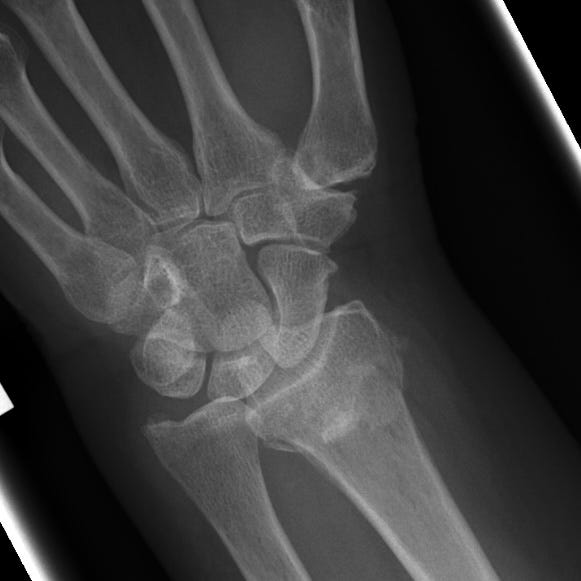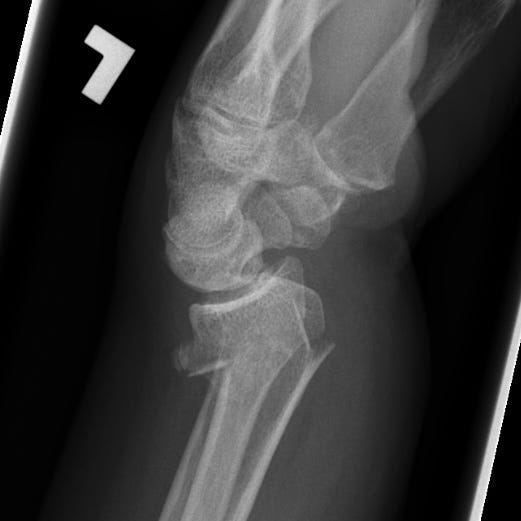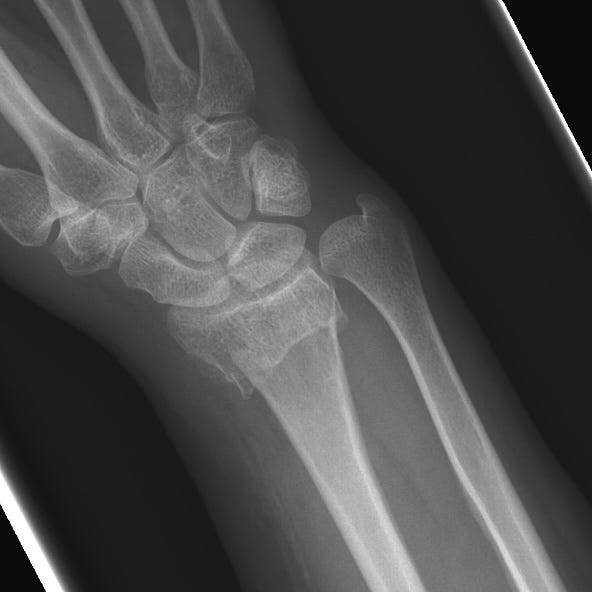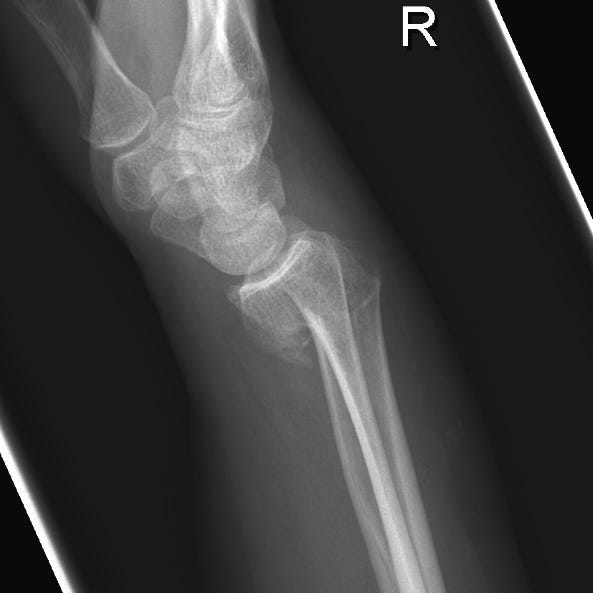Most distal radius fractures result from a fall onto an outstretched hand (FOOSH). They comprise transverse fractures with dorsal displacement/angulation of the distal fragment (Colles fracture); transverse fractures with volar displacement/angulation of the distal fragment (Smith fracture); coronally oriented, intra-articular, distal radial fractures (Barton and reverse Barton fractures); and radial styloid avulsion fractures (Chauffeur’s or Hutchinson fracture).
Colles fracture (after Abraham Colles, an irish surgeon, 1773-1843) typically results from a fall onto a hyperextended wrist, which clinically appears as a “dinner fork” deformity due to dorsal angulation of the distal radial fragment and hand. Colles fractures may be impacted, extend to the radiocarpal or radioulnar articulations, and are often associated with an ulnar styloid fracture. They are more common in elderly women, as osteoporosis is a predisposing factor. Most are managed with closed reduction and cast immobilization with the wrist held in neutral to slight flexion.


Colles fracture. Comminuted, dorsally angulated distal radial fracture with associated ulnar styloid fracture but without involvement of the radiocarpal or distal radioulnar joints.
The Smith fracture is another type of transverse distal radial fracture (Robert William Smith, Colles’ successor at Trinity college in Dublin, 1807-1873). In contrast to the Colles fracture, it is characterized by volar angulation of the distal fragment. Smith fractures result from either a direct blow to the back of the wrist or a fall onto a flexed wrist with the forearm in supination. The hand and distal radial fragment are displaced towards the palm, causing a “garden spade” deformity on physical examination. Less common than Colles fractures, they are usually seen in younger patients with high-energy trauma. Smith fractures are unstable and often require open reduction and internal fixation. Because of its location, the median nerve is susceptible to injury and should be evaluated before and after closed reduction.


Smith fracture. Transverse distal radius fracture without radiocarpal extension, radioulnar extension, or associated ulnar styloid fracture. Moderate volar angulation of the distal fragment.
Radial styloid fractures are due to axial compression of the scaphoid into the distal radius with associated radial collateral ligament avulsion and are often associated with scapholunate injury and perilunate dislocation. It is an unstable fracture that requires operative fixation and immobilization.


Hutchinson/Chauffeur’s fracture. Nondisplaced, intra-articular, oblique fractures of the radial aspect of the distal radii with extension to the radoiocarpal joint in two patients.
Plain radiographs (AP, lateral, oblique) of the wrist are sufficient for diagnosis. Distal radius fractures are classified according to (1) extension into the radiocarpal joint, (2) extension to the distal radioulnar articulation, and (3) the presence of an associated ulnar styloid fracture. These features should be included in a description to facilitate the orthopedic surgeon’s ability to make optimal management decisions

